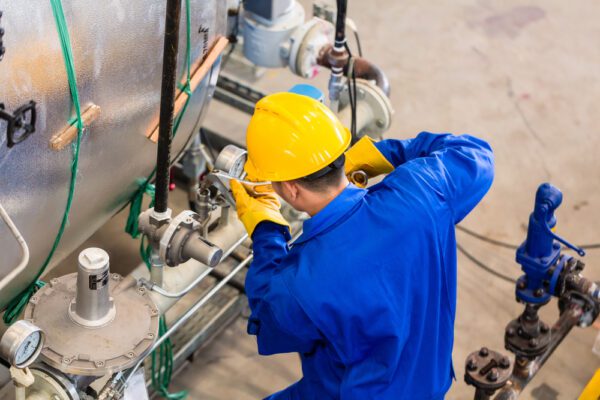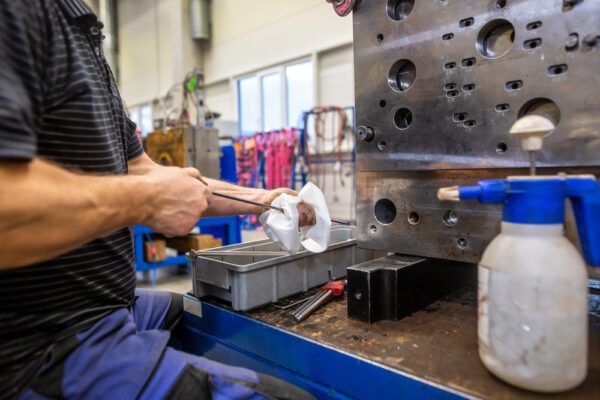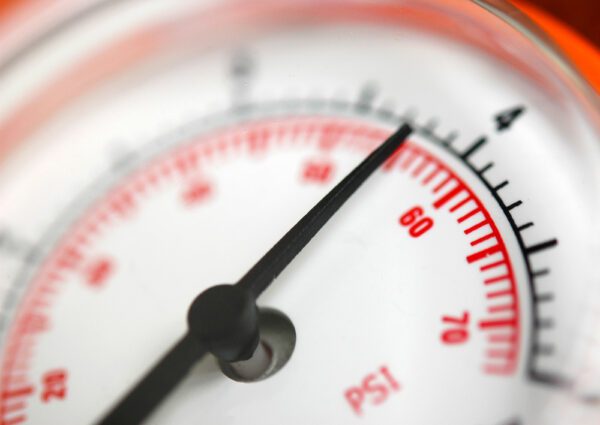
Every asset has unique maintenance needs, and failing to address them leads to unplanned downtime and costly repairs. To keep equipment and facilities running smoothly, organizations rely on four main types of maintenance: corrective, preventive, condition-based, and predictive.
By understanding all four types, organizations can choose the right maintenance mix for each asset, ensuring that they maintain assets effectively while controlling costs, minimizing downtime, and maximizing useful life. This article provides an overview of the most common types of maintenance and how each can help you optimize asset performance.
For a visual overview, download our Types of Maintenance infographic
Types of Maintenance
While definitions vary across organizations and industries, maintenance techniques are typically categorized as being either reactive or proactive based on the timing of maintenance relative to a failure. Understanding the distinction helps organizations balance costs, minimize downtime, and allocate resources effectively.
This article focuses on the techniques used to maintain assets, rather than overall maintenance strategies, which combine multiple techniques depending on the asset, failure risk, and operational impact. The four types of maintenance discussed here are:
- Corrective maintenance (CM)
- Preventive maintenance (PM)
- Condition-based maintenance (CbM)
- Predictive maintenance (PdM)
Learn how to implement a proactive maintenance strategy
Reactive Maintenance
Reactive maintenance is unplanned and occurs after an asset has failed or malfunctioned. It is the most intuitive approach to maintenance, and is often described as “fix it when it breaks.” Reactive maintenance largely represents a single type of maintenance – corrective maintenance.
Corrective Maintenance (CM)

Corrective maintenance (CM) is a reactive maintenance technique performed to restore a non- or under-performing asset to operational or optimum condition. It occurs after a breakdown or an undesirable condition is observed, rather than being planned in advance.
CM may be performed in response to an equipment failure or to improve an asset’s appearance, such as mowing a lawn or cleaning food processing equipment. When applied to physical assets, CM is considered a “repair” that restores functionality, as opposed to “maintenance” which is performed to prevent failure.
While corrective maintenance is a maintenance type itself, it is sometimes further broken down into the following subcategories based on the level of urgency or criticality:
- Breakdown maintenance: Maintenance performed only after equipment has failed, usually as part of a “run-to-failure” strategy
- Emergency maintenance: Maintenance performed in response to a failure that threatens safety
All of these activities fall under the corrective maintenance umbrella, but distinguishing them from one another helps organizations prioritize resources and respond appropriately to failures of varying severity.
When to Use Corrective Maintenance
Corrective maintenance is the most common type of maintenance used in industrial organizations because it is an intuitive “break-fix” approach. While it may seem simple, CM can be used more deliberately as part of an overall maintenance strategy.
Corrective maintenance is the centerpiece of a run-to-failure (RTF) strategy, where assets are purposefully allowed to fail in order to minimize costs. It is a good strategy for equipment that is relatively inexpensive, non-critical to operations, has unpredictable failure patterns, or for which would be too costly for proactive measures. RTF is best applied to:
- Inexpensive or consumable items, such as filters, belts, and blades, which are designed to be replaced rather than repaired
- Non-critical assets where failure won’t halt production or compromise safety
- Durable or low-wear assets that are unlikely to fail under normal operating conditions
While corrective maintenance is generally related to equipment assets, it can also be applied to property maintenance as well. For example, cutting grass, trimming trees, and cleaning gutters are all examples of corrective maintenance that return an asset to a desirable state, and are not related to a failure or decreased performance.
Corrective Maintenance Examples
Some common corrective maintenance activities across equipment and facilities include:
- Repairing a machine after a failure
- Replacing a light bulb after it has burned out
- Restoring operation to a failed HVAC system
- Painting, janitorial, and other cosmetic facility maintenance tasks
- Fixing a leaky pipe or valve
- Replacing a failed motor or conveyor belt in a production line
- Checking HVAC systems before seasonal changes
Proactive Maintenance
Proactive maintenance is planned and performed before a failure occurs, with the goal of preventing unplanned downtime. It encompasses several techniques, including preventive maintenance, condition-based maintenance, and predictive maintenance. In contrast to reactive maintenance, proactive maintenance can be described as “fix it before it fails.”
Preventive Maintenance (PM)

Preventive maintenance (PM) is a proactive maintenance technique performed to reduce the likelihood of failure. It involves performing routine tasks at regular intervals to catch and fix small issues before they lead to unplanned downtime. Common tasks include inspections, part replacement, lubrication, calibrations, and cleaning.
Preventive maintenance is typically scheduled based on either time or usage:
- Time-based Maintenance (TbM): Maintenance scheduled using fixed time intervals without considering how much the asset has been used.
- Usage-based Maintenance: Maintenance scheduled based on measured usage or meter reading values.
In addition to these approaches, preventive maintenance can be extended into condition-based maintenance (CbM) and predictive maintenance (PdM). These advanced, data-driven techniques build on preventive maintenance principles to optimize the timing of maintenance tasks. These types of maintenance are defined later in this article.
Note that the term “preventive maintenance” is sometimes used more broadly to refer to an overall maintenance strategy, rather than just the individual tasks. In this context, a PM strategy is the plan for maintaining assets across a facility. In this article, we focus on the work performed on individual assets rather than the overall PM strategy.
When to Use Preventive Maintenance
Organizations implement preventive maintenance to reduce their reliance on corrective maintenance and prevent unexpected failures on critical equipment. Instead of reacting to breakdowns, preventive maintenance allows organizations to plan maintenance activities in advance and ensure parts, tools, and labor resources are available when needed. This predictability improves overall operational efficiency and reduces downtime.
As part of a larger maintenance strategy, preventive maintenance fills the gaps between corrective maintenance tasks by maintaining day-to-day performance. It also lays the groundwork for more advanced maintenance techniques by establishing a routine of monitoring, inspections, and early intervention.
Another key advantage of preventive maintenance is that it is planned, allowing teams to schedule work around production or other business operations. By coordinating tasks during planned downtime, maintenance teams can minimize disruptions and ensure critical assets are available when needed.
Preventive maintenance is also often required by regulatory standards such as ISO 9001, FDA regulations, or industry-specific guidelines. Following a structured preventive maintenance plan helps organizations maintain compliance, document maintenance activities, provide evidence of continuous improvement, and reduce the risk of violations.
Preventive Maintenance Examples
Preventive maintenance is carried out through routine tasks including:
- Performing monthly visual equipment inspections
- Replacing air filters every 6 months
- Lubricating moving parts weekly
- Calibrating pressure gauges every 6 weeks
- Cleaning gutters and downspouts every autumn
- Replacing worn parts after 1,000 hours of use
- Testing emergency lighting quarterly
Condition-based Maintenance (CbM)

Condition-based maintenance (CbM) is a proactive maintenance technique where maintenance is performed only when there are signs of imminent failure. This approach relies on real-time data collected through sensors, inspections, or other diagnostic tools to monitor conditions such as temperature, vibration, or pressure. Maintenance is scheduled or performed when measurements are outside of predefined thresholds or normal operating ranges.
As an extension of preventive maintenance, CbM prevents failures while being more precise about when maintenance occurs. Because traditional PM follows a rigid schedule, maintenance may be performed even when it is not needed, wasting time and resources. Condition-based maintenance attempts to trigger maintenance only when necessary – when equipment shows signs of wear or decreased performance.
When to Use Condition-based Maintenance
The decision to use condition-based maintenance requires more planning and analysis than corrective or preventive maintenance. Because it involves investing in condition monitoring sensors and equipment, qualified personnel, specialized training, and other ongoing costs, organizations must carefully evaluate the potential return on investment (ROI).
CbM is best suited for highly critical production assets with high repair or replacement costs, or for equipment whose unexpected failure would severely disrupt operations. By continuously monitoring these assets, organizations can perform maintenance when there are early signs of wear, which prevents costly downtime, reduces the risk of catastrophic failures, and extends useful life.
Learn how to make repair vs. replace decisions
Condition-based Maintenance Examples
Common condition-based maintenance tasks include:
- Detecting unusual vibration patterns in motor bearings or pumps
- Scheduling lubrication or cooling system inspection if temperatures rise above normal
- Observing pressure changes in hydraulic systems
- Measuring liquid flow to detect blockages or abnormalities
- Tracking humidity, temperature, or air quality in sensitive environments
Predictive Maintenance (PdM)

Predictive maintenance (PdM) is a proactive maintenance technique that forecasts when an asset is expected to fail. This type of maintenance uses real-time data, historical performance data, and advanced analytics to predict when a failure is likely to occur. PdM enables organizations to anticipate failures before any signs of wear or decline are apparent, giving more time to schedule maintenance at the most convenient times.
Whereas condition-based maintenance monitors real-time conditions, PdM goes a step further by applying algorithms, machine learning (ML), and artificial intelligence (AI) to forecast the timing of failures. Instead of waiting for a specific condition to be met, organizations using predictive maintenance are alerted to impending failures well in advance of when they might actually occur.
When to Use Predictive Maintenance
Predictive maintenance requires significant investment in technology, sensors, analytics platforms, and specialized training – not to mention time and effort. Because of these costs, organizations must thoroughly evaluate the ROI before implementing PdM. Typically, only very large organizations with robust resources can successfully implement this technique.
Like CbM, predictive maintenance is most valuable for high-value, mission-critical assets that are expensive to repair or replace. However, industries that rely on remote or mobile assets, such as oil and gas, utilities, or fleet management, may benefit from PdM as it reduces the need for manual inspection and travel. By forecasting failures in advance, PdM helps these organizations optimize maintenance scheduling and improve resource planning.
Predictive Maintenance Examples
Examples of how PdM is used in practice include:
- Using pressure, flow, and corrosion data to predict potential leaks in oil and gas pipelines
- Analyzing engine telematics, fuel efficiency, and brake wear to forecast component replacements in fleet vehicles
- Monitoring turbine performance and electrical grid abnormalities to anticipate power failures and prevent outages
- Using cycle counts and motor current trends to predict when robotic arms will require service
- Tracking vibration, rotor speed, and gearbox performance to schedule repairs on wind turbines before major failures
Using a CMMS to Manage All Types of Maintenance
Managing a maintenance strategy that combines multiple maintenance techniques is complex. Each type of maintenance requires different levels of planning, data collection, and coordination, which is difficult to manage manually.
A computerized maintenance management system (CMMS) helps organizations develop, manage, and execute their maintenance strategy. By providing better visibility into asset health, resource availability, and maintenance schedules, a CMMS provides maintenance teams with the information needed to effectively apply each type of maintenance, ensuring that assets are maintained in the most effective way.
Manage Your Maintenance Strategy with FTMaintenance Select
When developing a maintenance strategy, it is important to understand the types of maintenance at your disposal and when to use them. Every strategy is unique, influenced by industry, size of the maintenance team, available resources, and the types of assets being maintained.
FTMaintenance Select is a powerful CMMS tool designed to help you manage any maintenance strategy. By centralizing maintenance data, FTMaintenance Select gives you access to critical asset details, work orders, spare parts inventory, and other essential resources, allowing you to effectively track and manage maintenance activities. Request a demo of FTMaintenance Select to see how it can help you optimize your maintenance strategy.